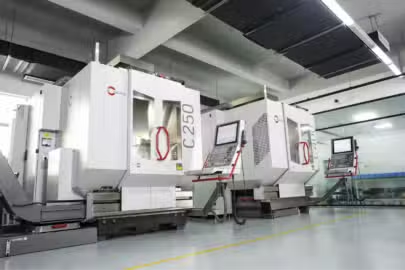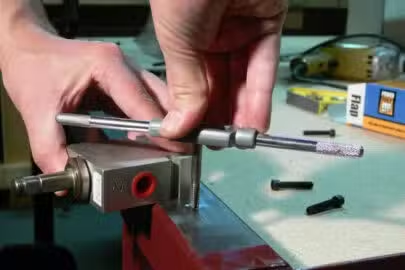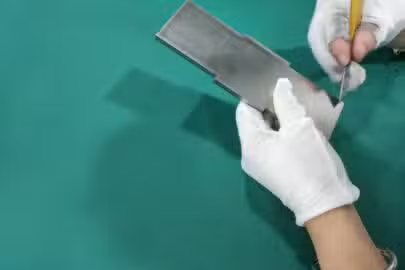Undoubtedly, the automated functionality of computer numeric control (CNC) machining significantly contributes to the precision of the machines. However, the true versatility of CNC machines stems from the extensive array of CNC machining tools.
CNC machining tools possess unique properties that render them suitable for various operations. They help reduce the reliance on manual input from machine operators. This addresses the longstanding issue of operator fatigue, preventing disruptions to the machining process.
Categorized into cutting (milling), turning, drilling, and grinding tools, these tools serve specific functions. This article aims to describe the different types of CNC machine tools and the functions inherent in each. This is a quick reference if you’re seeking a concise guide on these machining tools.
Why Is Tool Selection Important in Machining?
You might be curious about the significance of choosing the right tool. Despite the abundance of tools, finding the perfect match for a job isn’t always guaranteed. Specific geometries, such as fillets, are crucial in tool selection. The fillet’s radius should be at least half the end mill’s diameter. Going smaller can make achieving the desired outcome harder or necessitate an unnecessary tool change.
When designing features for your part, ensure compatibility with standard tool sizes. For example, if you have drilled holes, ensure they align with commonly available drill bit sizes. It’s advisable to design features with standardization in mind, opting for consistent hole sizes when possible.
Knowing the commonly available CNC machining tool types can simplify the machining process for your part’s geometry. If your design requires a different tool, the machine shop might incur additional time or cost to procure a custom tool.
Types of CNC Machining Tools
As mentioned earlier, tooling for CNC machines can be divided based on their various operations.
CNC Milling Tools (CNC Cutting Tools)
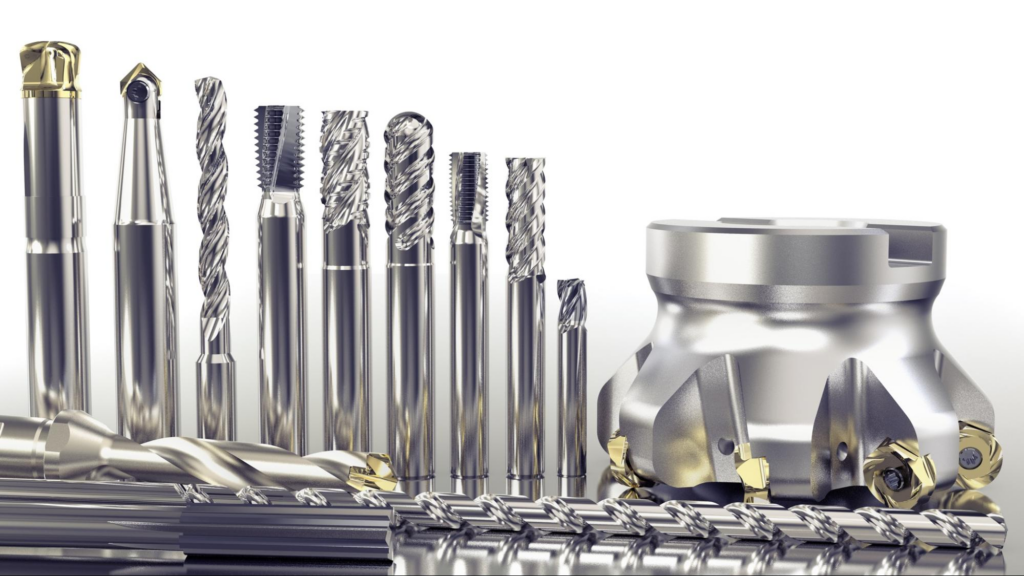
CNC milling tools rank among the most widely employed tool sets in the manufacturing industry. These tools are also often called CNC cutting tools, CNC cutters or CNC milling cutters. CNC Milling is a crucial procedure in machining, leveraging various CNC tools to achieve accuracy comparable to the turning procedure.
CNC milling tools are used with a CNC milling machine to facilitate the removal of material from different locations on a stationary workpiece through a circular motion. Here are the most common ones.
End Mills
These tools exhibit enhanced versatility in their operations, boasting up to eight sharp flutes on their sides and ends. This characteristic enables them to efficiently remove substantial amounts of material without needing a pre-drilled hole.
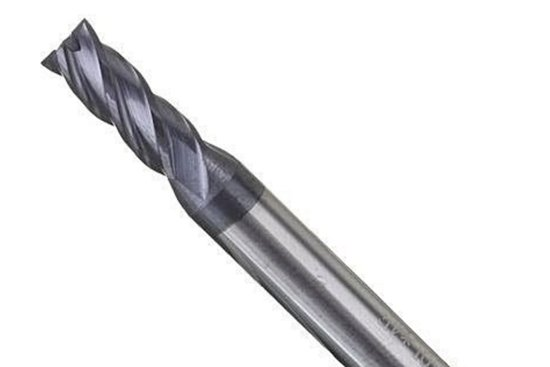
There are various kinds of end mills. They vary based on the number of flutes and nose designs, and your choice will depend on your project needs.
- Flat-faced or square end mills excel in cutting performance and accuracy for applications such as creating pockets, slots, or grooves.
- The bull nose end mill has a rounded edge and flat end. It is efficient for filleting, roughing, and generating smooth curves.
- The ball nose end mill has a round tip and perfectly cuts complex shapes. This makes it ideal for materials like aluminum, brass, or stainless steel.
Face Mills
In CNC milling machines, the starting material or workpiece often requires preparation before major milling operations can occur. Face mills are specialized CNC machining cutting tools designed to create flat sections on the workpiece before more detailed cutting operations occur. These tools have a solid body with interchangeable cutter inserts that can be swapped.
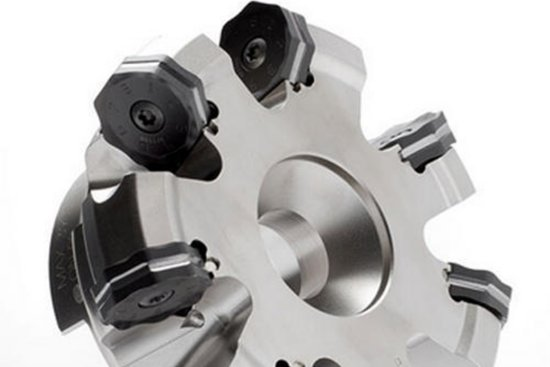
A “side and face cutter” is a suitable choice for more complex operations. It has a flat head with replaceable carbide cutting edges positioned on the side, limiting cutting to the horizontal direction. Machinists use face mills primarily to make flat sections on raw materials.
One notable advantage of face mills is that their cutting inserts are replaceable. This contributes to better durability and enhanced work quality. This replaceability also ensures a longer operational life, and when needed, the inserts can be easily replaced without acquiring a new tool.
Hollow Mills
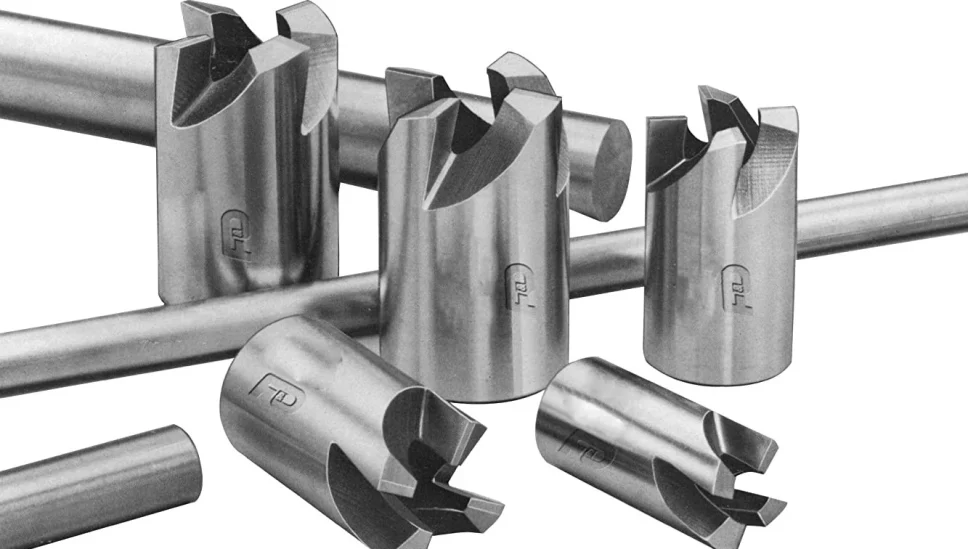
Hollow mills are tube-shaped cutting tools featuring three or more cutting edges that encircle and rotate around a cylindrical workpiece. This CNC machine tool is effective for swiftly and efficiently establishing a consistent pre-thread diameter. Additionally, machinists use it in drill press work for finishing projections that require precise positioning.
The sharpness of the hollow mill contributes to clean cuts and prolonged tool life, distinguishing it from other types of cutters. Its faster cutting pace sets it apart from traditional end mills. This is attributed to the displacement of more material per revolution due to its shape. Furthermore, the hollow mill enhances chip evacuation, minimizing the risk of tool clogging during machining operations.
Slab Mills

Slab mills, called slab cutters or plain mills, are not as commonly found in modern machining centers. They aim to cut flat surfaces since they lack side teeth and feature slab surfaces. These cutters are equipped with teeth only on their periphery. So, machinists use them for general heavy-duty operations. Positioning the workpiece surface parallel to the CNC mill table is essential to employing slab mills effectively.
Thread Mills
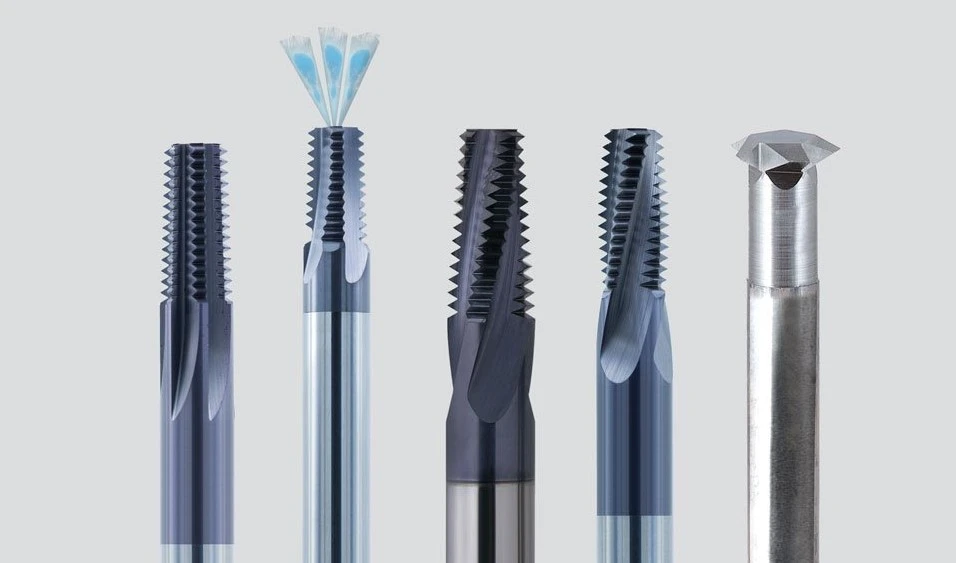
As the name implies, thread mills are CNC cutting tools designed for cutting threads. Unlike taps that exclusively cut internal threads, CNC machines equipped with thread mills can cut both internal and external threads. Unlike traditional single-point threading tools like taps or dies, thread mills offer several advantages.
Tools like taps and dies require separate entry and exit holes for each completed thread lengthwise down the workpiece. On the other hand, a thread mill can generate multiple threads with only one required entry point per pass across the material’s surface. Opting for thread mills is recommended if you need to penetrate hard metals or work on asymmetrical parts.
Reamers
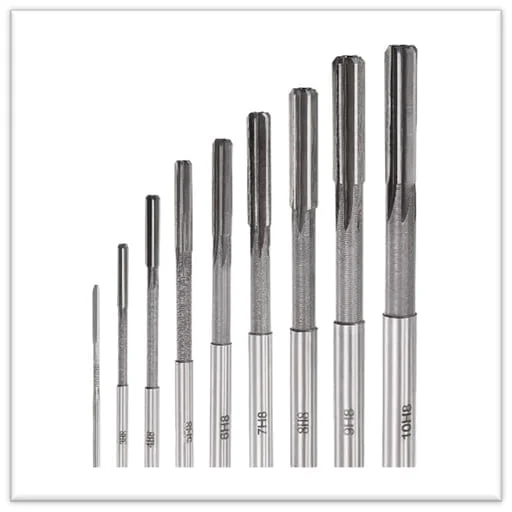
These CNC machine tools help enlarge existing holes in a workpiece. This tool enables the expansion of existing holes while ensuring dimensional accuracy and tight tolerances. For example, if you need a 1/2″ hole, a recommended approach is to begin with a smaller drill bit (such as 31/64″). Then, use a reamer to widen the hole to the desired 1/2″.
Gear Cutters
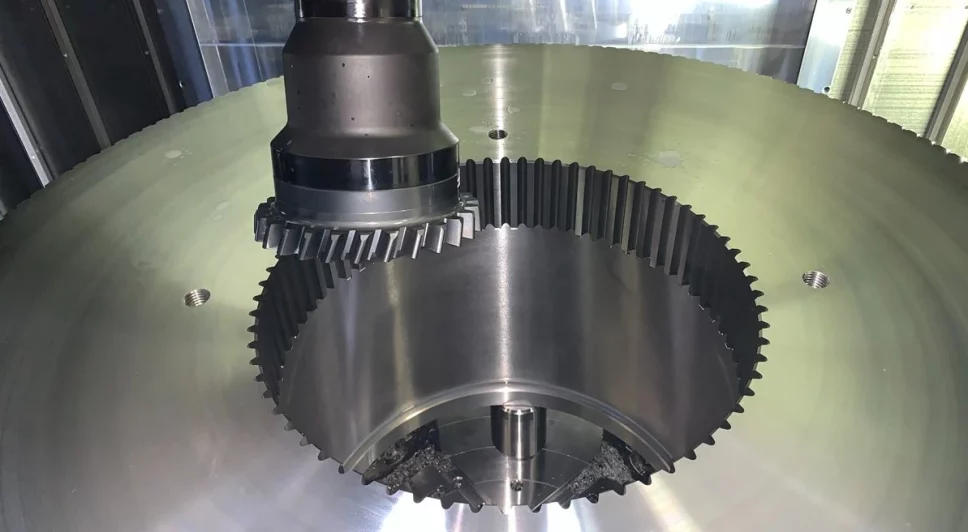
Gear cutters, as the name implies, are employed in manufacturing industries to create gears. They are versatile tools capable of fabricating various types of gears, such as spur, worm, screw, bevel, and helical gears. The choice of the machine for gear production depends on the desired number of teeth for the gear being manufactured.
Fly Cutters

These CNC cutters are rotary tools comprising a tool body and cutting bits, creating shallow or broad cuts on workpieces. As a result, they give a smooth surface finish. Compared to many face mills, fly cutters are cost-effective and provide an improved surface finish. Therefore, they are ideal for plane surfacing operations. Since fly cutters can have one or two cutting bits, they can cover a larger workpiece section.
CNC Turning Tools
Tracing its roots back to the Egyptian empire, turning is one of the oldest machining procedures. CNC turning tools operate in conjunction with a CNC lathe machine or CNC turning machine. Herein, the workpiece rotates at high revolutions per minute.
During this process, the turning tool shapes the workpiece into a programmed form. The type of CNC turning procedure and the chosen turning tool influence the specific shape of the product. Examples of CNC turning tools include the following:
Boring Tools

They work with the lathe to expand pre-existing straight or tapered holes in the workpiece that have been drilled or cast. In CNC turning, these tools are crucial in achieving precise and accurately sized holes for various applications.
Knurling Tools
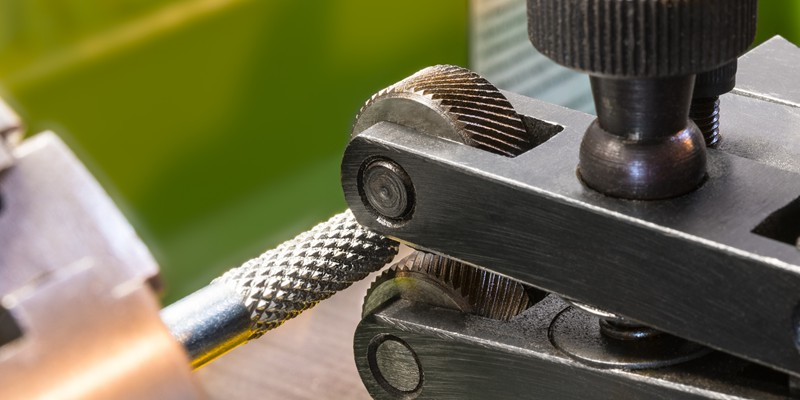
Knurling tools in CNC turning operations create diverse surface patterns on workpieces, including straight, diagonal, or diamond shapes. These patterns improve grip on the finished part, enhancing functionality and usability.
Chamfering Tools

These tools find application in various tasks, including deburring, creating bevels, and eliminating sharp edges on workpieces. These tools contribute to the overall finishing and precision of the machined components.
Parting Tool

Parting tools are often equipped with a blade-like edge, and they function by cutting materials away from the workpiece. Machinists employ these tools to separate the finished part from the remainder of the workpiece, ensuring a precise and clean separation.
CNC Drilling Tools
Known as drill bits, these tools are utilized by machinists to create holes in workpieces with their flutes and tapered cutting points. Drill bits typically have a conical cutting point and a shaft with one or more flutes.
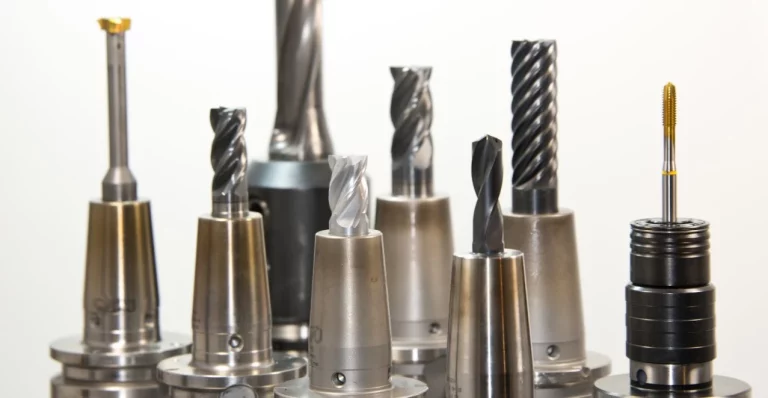
There are three main types of CNC machining drill bits, each serving distinct functions. They include:
- Center Drills: Precision is achieved using center drill bits to create small holes in the workpiece. Machinists use them to establish precise holes before enlarging them with other drill bits.
- Twist Drills: These are more suitable for holes without major specifications.
- Ejector Drills: Suited for deep hole drilling, creating larger and deeper holes in the workpiece.
Grinding Tools

Grinding tools work to smooth the surface of a workpiece with a high level of accuracy. Among these tools, one common type is the abrasive grinding wheel. This CNC machine tool is crucial in precision grinding applications, efficiently removing material to achieve the desired surface finish.
Materials Used for Making CNC Machining Tools
The type of material in CNC machine tools decides how fast and efficient you can carry out CNC machining operations. A basic guideline is to make sure the material of your CNC machine tools is tougher than the material you’re working on. If it’s not, the CNC machine tool won’t work well.
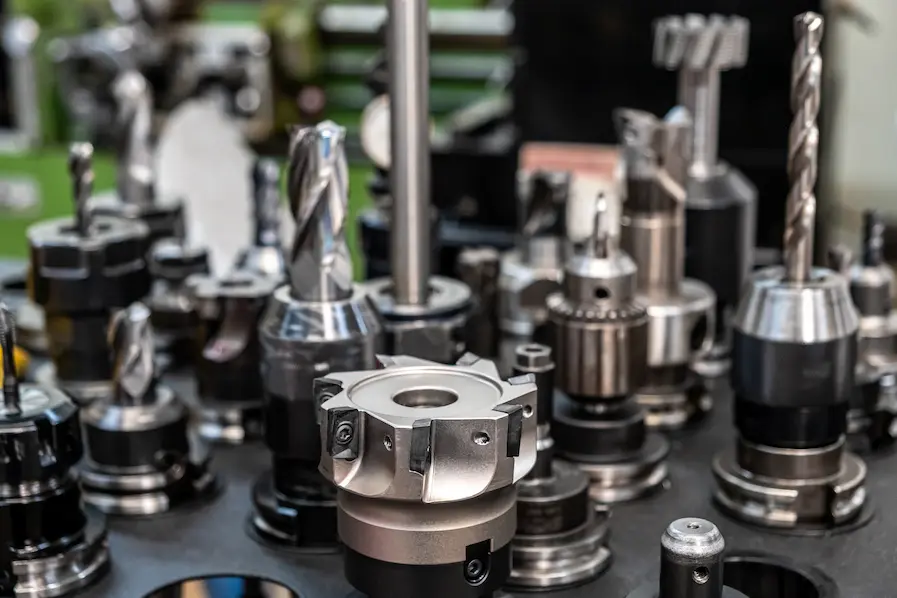
Here are some usual materials used in making machining tools:
Carbon Steel
It is a type of steel blend with about 1% carbon and about 1.6% manganese by weight. Tools made from carbon steel are budget-friendly and easy to work with. They work well for slower CNC metal machining of soft metals such as aluminum, magnesium, and brass.
However, it comes with a downside – it lacks durability. Because of this, carbon steel tools are not suitable for heavy-duty tasks. Their low melting point of about 200°C makes them unable to handle the intense heat produced in demanding operations.
Carbides
Carbide is a mix of carbon and tungsten. Tools made from carbide are known for their resistance to rust, heat, and scratches. They even last longer than steel tools in tough conditions.
Cemented carbides include carbides and metals like titanium. This makes them capable of enduring higher temperatures than high-speed steel. However, they are less durable than high-speed steel. Cracks or chips on the tool’s surface can shorten its lifespan. Consequently, they are mainly used for crafting finishing tools.
High-Speed Steel
High-speed steel is essentially carbon steel combined with extra elements such as tungsten, molybdenum, chromium, vanadium, and cobalt. These added elements provide high-speed steel with high temperature and abrasion resistance, making it durable. CNC machine tools crafted from high-speed steel are excellent for continuous high-speed machining and heavy-duty operations.
Ceramic
CNC machining tools crafted from ceramic provide resistance to heat and corrosion. They remain chemically stable because ceramic doesn’t react with most metals used as workpieces. Ceramic tools demonstrate high efficiency, making them well-suited for the high-speed semi- and final finishing of hard steels, superalloys, and cast iron.
Considerations for Choosing CNC Machine Tools
Ensuring you have the appropriate tool is crucial for the success of any machining process. To guarantee the right tool selection, you must consider the different properties needed to produce machined parts with the best qualities.
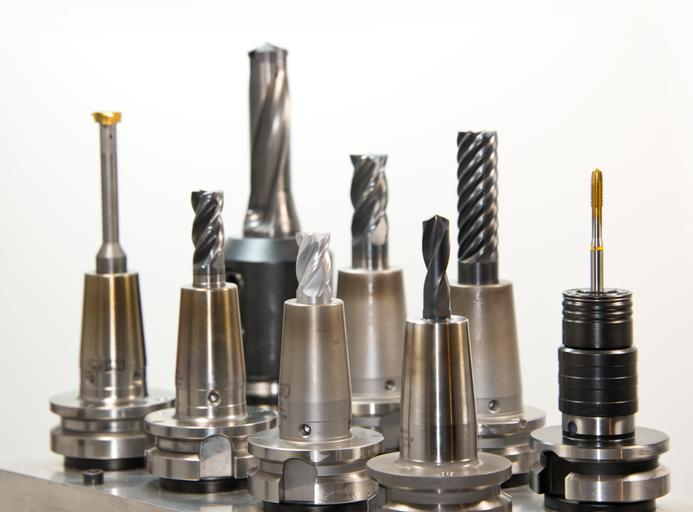
Here are the key factors to consider when choosing machining tools:
Workpiece Material
Choosing the right tool depends on the material you plan to work on. As mentioned before, the tool used in machining must be tougher than the workpiece. Once you know the toughness of the workpiece, you can easily identify the materials suitable for the machining process.
Tool Material
Considering the tool’s characteristics is crucial in selecting the right one. For instance, if you require a tool with a long lifespan and the ability to withstand high temperatures, high-speed steel tools are the optimal choice. On the other hand, if you need a tool to cut tough materials like cast iron, ceramics is the best option.
The Machining Operation
Different CNC machining tool types are designed for specific machining procedures. So, your selection is already narrowed down based on the type of operation. However, in certain instances, tools designated for one machining procedure might also be suitable for other applications.
Number of Flutes
The number of flutes on a tool plays a crucial role as it influences the feed rate of the machine tool. More flutes result in a higher cutter velocity against the workpiece. However, having too many flutes might lead to bits of the cut-off workpiece getting stuck between them. Therefore, determining the optimal number of flutes for a machining procedure is essential.
The Tool Coating
Choosing the suitable coating for a CNC machine tooling is crucial as it directly influences its properties. For instance, opting for a titanium nitride coating enhances tool hardness but comes at a higher cost. Various coatings can improve tool life, hardness, and heat resistance. Common examples include:
- Titanium Nitride: This classic coating increases cutting tool hardness, improving thermal stability and wear resistance, and offers moderate oxidation resistance. However, its use has decreased with the introduction of coatings with better properties.
- Chromium Nitride: It was developed to address the limitations of titanium nitride. This coating increases machine tool hardness, thermal strength, and corrosion resistance, making it suitable for high-heat applications.
- Aluminum Titanium Nitride (AlTiN): AlTiN contains approximately 65% aluminum, enhancing resistance to heat in CNC machine tools.
- Titanium Carbo Nitride: This variation of titanium nitride contains carbon. This improves the hardness and surface lubrication of CNC machine tools. However, it is limited to lower-temperature environments due to its relatively low operating temperature.
Let Zintilon Help with Your CNC Machining Tool Selection
CNC machine tools play a crucial role in machining processes. Selecting the right tool is essential for a smooth machining procedure. Instead of struggling to find the perfect tool, consider outsourcing your machining tasks to professionals.
Zintilon is your go-to source for all things CNC machining services. We provide a range of services, such as turning, milling, drilling, and more. Whether it’s a prototype or low-volume machined parts, we assure you of high-quality production.
Moreover, cost concerns shouldn’t be a burden when working with Zintilon. We offer competitive prices and industry-leading turnover times for your convenience. Get a quote now, and let’s get started!


